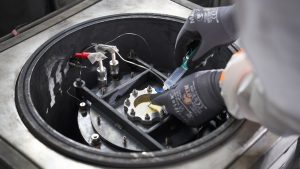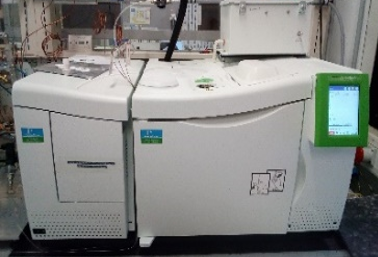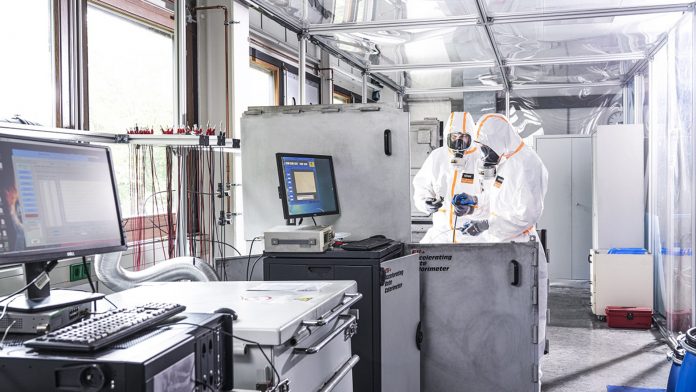Dr Carlos Ziebert, leader of the group Batteries – Calorimetry and Safety and head of IAM-AWP’s Calorimeter Center, KIT, describes benefits of its new facility for battery venting analysis.
Recently a new accelerating rate calorimeter (ARC), the EV+ from Thermal Hazard Technology has been installed in the Battery Calorimeter Laboratory of the group Batteries – Calorimetry and Safety at the Institute of Applied Materials – Applied Materials Physics (IAM-AWP) of Karlsruhe Institute of Technology (KIT). This new system provides an integrated infrared camera system that allows to record thermal images during abuse tests on lithium-ion batteries (LIB). As well as this, it allows for the analysing of venting gases in combination with a gas chromatography (GC) system Clarus 690 Arnel 4019 from Perkin-Elmer with three thermal conductivity detectors that is jointly operated by two groups from two other IAM institutes.
In the ARC self-heating, thermal stability and thermal runaway of LIBs are characterised and the critical parameters and their thresholds for safe operation are determined. Important parameters here are the onset temperature, the increase in internal pressure, the amount of heat released during thermal runaway and, finally, the released gas volume and the qualitative and quantitative composition of the emitted gases. These gases are mainly produced by the electrolyte, which is liquid and flammable in the current cells. Due to the chemical content of the LIB, explosive or toxic gases can be released that represent a potential hazard due to their rapid and widespread distribution.


Cylindrical cells and prismatic hard case cells typically provide so-called safety vents, which are predetermined breaking points that allow to release the overpressure that is induced by the gas formed due to an abuse of the cell, such as overcharging or overheating. In contrast, pouch cells tend to open at any weakest point of their welding seeds. This can be close to the current collectors, but this point is not as well-defined as for the two other cell types.
In order to collect the gases during the venting of the cell, an abuse test is performed in the ARC inside a pressure-tight cylinder. This cylinder is connected via a small capillary to a gas mouse. When the cells vent, the gases are collected in the gas mouse. Directly after the test, the gas mouse is brought to the GC system. Then the gas is released via a gas feeding system into the inlet of the GC and is analysed both qualitatively and quantitatively using the three thermal conductivity detectors (TCD)). If unknown components are found, they can be further inspected using a mass spectrometer which is also combined with the GC system. This new facility consisting of the ARC and the GC system plays an important role in the project AnaLiBa (Analytics of Lithium-Ion-Batteries) that is funded by the German Federal Ministry of Education and Research (BMBF) in the framework of the competence cluster Analytics/Quality assurance (AQua) and was started on 1 January 2021. In the AnaLiBa project, the main aim is the joint method development of a standardised sample handling process for the gas analysis of large cells.
Knowledge of the gas composition under the various cell abuse scenarios reveals the relevant decomposition paths and gives an idea, which protective measures are necessary, for example, to delay or prevent the cell fire caused by the ignition of vent gases or thermal runaway. This serves both the mission of the AQua cluster and the innovation pipeline of the BMBF umbrella concept for the German battery research factory.








